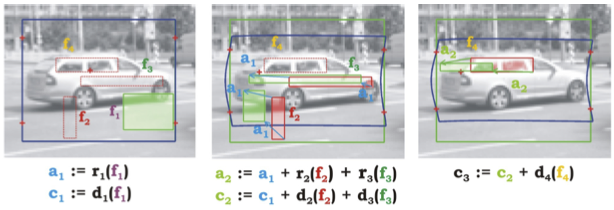The successively evaluated features used in a sliding window detection process to decide about object presence/absence also contain knowledge about object deformation. We exploit these detection features to estimate the object deformation. Estimated deformation is then immediately applied to not yet evaluated features to align them with the observed image data. In our approach, the alignment estimators are jointly learned with the detector. The joint process allows for the learning of each detection stage from less deformed training samples than in the previous stage. For the alignment estimation we propose regressors that approximate non-linear regression functions and compute the alignment parameters extremely fast.
K. Zimmermann, D. Hurych, T. Svoboda. Non-Rigid Object Detection with Local Interleaved Sequential Alignment (LISA). In IEEE Transactions on Pattern Analysis and Machine Intelligence, [pdf as accepted], April 2014, Vol 36, Issue 4

